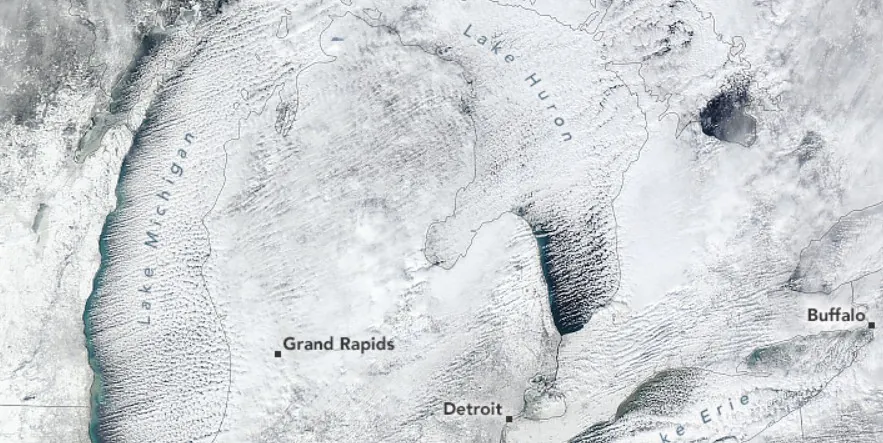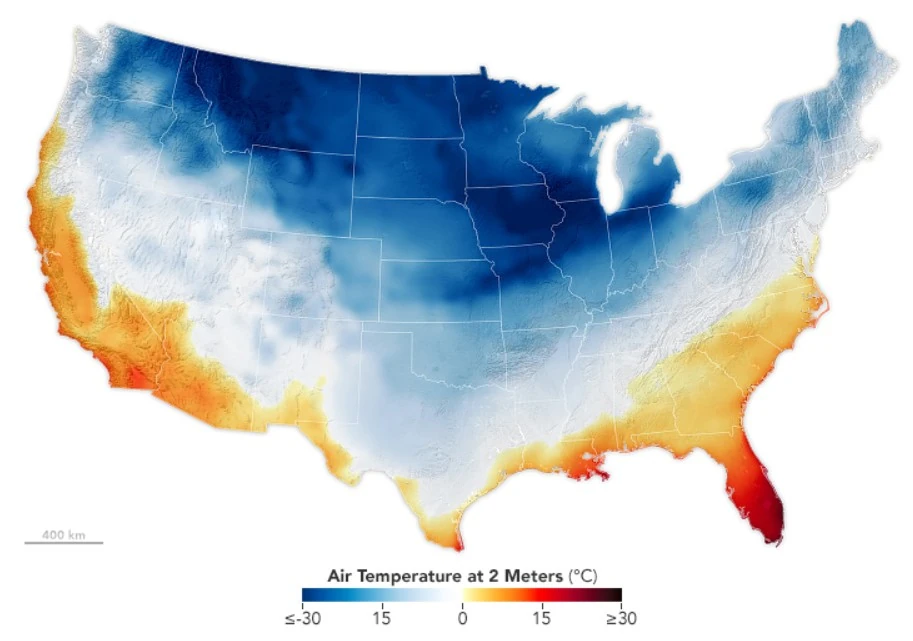Winter storms cause over 70 deaths across nine US states

Since January 12, 2024, a series of winter storms and an outbreak of cold air have led to at least 72 deaths across nine US states. The severe weather has caused significant disruptions, including power outages affecting over 85 000 homes and businesses in Oregon, hazardous travel conditions, and extensive road closures. The latest forecasts indicate another round of extreme cold and heavy snowfall across the central and eastern US.
Since January 12, 2024, a series of winter storms and a cold air outbreak have wreaked havoc across several states in the United States, resulting in over 72 fatalities. These weather-related deaths have been reported in nine states, including Arkansas, Illinois, Kansas, Mississippi, New York, Oregon, Pennsylvania, Tennessee, and Wisconsin.
Tennessee has been particularly hard hit, with 27 weather-related deaths, including a tragic incident where a box truck driver lost control on a snowy highway in Knoxville.
In Pennsylvania, a snow-covered Interstate 81 was the site of a fatal minivan accident that claimed five lives, according to the coroner’s office in Lackawanna County.
On January 13 and 14, as the cold airmass moved south, sub-zero air temperatures enveloped Montana and the Dakotas. In Billings, Montana, the National Weather Service station recorded a temperature of -34 °C (-30 °F) on January 13, marking the lowest temperature at this site since its establishment in 1999.
The wind chill factor, which measures how cold it feels to human skin when wind is considered, reached extreme lows in both states, dropping to as much as -51 °C (-60 °F).
In the Pacific Northwest, Oregon experienced significant power outages, with more than 85 000 homes and businesses losing power amid freezing temperatures. As of 09:17 UTC on January 18, there were 42 000 customers still without power in Oregon and another 12 000 in California.
Travel remained treacherous due to icy roadways, downed trees, and power lines. A critical stretch of Interstate 84 was closed, and as of Wednesday evening, it remained shut down due to unsafe conditions.
New York City experienced its first significant snowfall in almost two years. On Tuesday morning, January 16, Manhattan’s Central Park was blanketed with 3.6 cm (1.4 inches) of snow, marking the end of a notable “snow drought” that lasted 701 days, during which the city had not seen more than 2.5 cm (1 inch) of snow.
10 to 13 cm (4 to 5 inches) of snow was recorded in Washington, D.C., and 5 to 8 cm (2 to 3 inches) in Baltimore and Philadelphia.
Buffalo, New York, received 30 – 91 cm (1 to 3 feet) of lake-effect snow overnight Tuesday. That’s on top of 91 cm (3 feet) that fell over the weekend.
Snowfall extended to the Appalachians and Western North Carolina, while Southern states faced unexpected cold conditions.

In Texas and Louisiana, temperatures dropped into the teens on January 15 and 16. On January 16, the airport in Houston, Texas, registered -7 °C (19 °F), setting a new all-time low for that date.
Nashville, Tennessee, a city not typically accustomed to heavy snow, received from 15 to 20 cm (6 to 8 inches) while residents of Mobile, Alabama experienced rare freezing rain and temperatures dropping to -0.5 °C (31 °F).
The weather forecast indicates that the situation is far from over. Another round of freezing rain and heavy mountain snowfall is expected to hit the Pacific Northwest. This new storm system is anticipated to bring up to 13 mm (0.5 inches) of ice in some areas, exacerbating the already challenging conditions. In the Cascades, snowfall rates could exceed 2.5 cm (1 inch) per hour, leading to total snowfall of 30 to 90 cm (1 – 3 feet) by Saturday, January 20.
The immediate coastline in northwest Oregon and Washington will experience rain, which poses a risk of localized flash flooding. Northern California is also bracing for isolated flash flooding. Meanwhile, lake effect snow bands will continue to affect areas downwind of the Great Lakes.
The Mid-Mississippi Valley is now the focus of the next winter weather system, with snow expected to spread to the Midwest, Lower Great Lakes, and Mid-Atlantic by Friday. The Southern Plains and Gulf Coast will experience a brief respite from the cold, with temperatures in the range of 16 – 27 °C (60s and 70s °F).
However, another Arctic airmass is set to bring a sharp drop in temperatures across the eastern half of the US, with daytime highs predicted to be 11 – 17 °C (20 – 30 °F) below normal in some areas. This will also bring low-temperature records and harsh wind chills.
References:
1 At least 40 dead from barrage of winter storms and cold – and there’s more on the way – CNN – January 18, 2024
2 Short Range Forecast Discussion – NWS Weather Prediction Center College Park MD – 300 AM EST Thu Jan 18 2024
3 Arctic blast ends New York snow drought, brings record cold to West – Reuters – January 18, 2024
4 Arctic Chill Sweeps U.S. – EO – January 18, 2024
Featured image credit: NASA Aqua/MODIS, EO. Acquired on January 16, 2024






Commenting rules and guidelines
We value the thoughts and opinions of our readers and welcome healthy discussions on our website. In order to maintain a respectful and positive community, we ask that all commenters follow these rules.